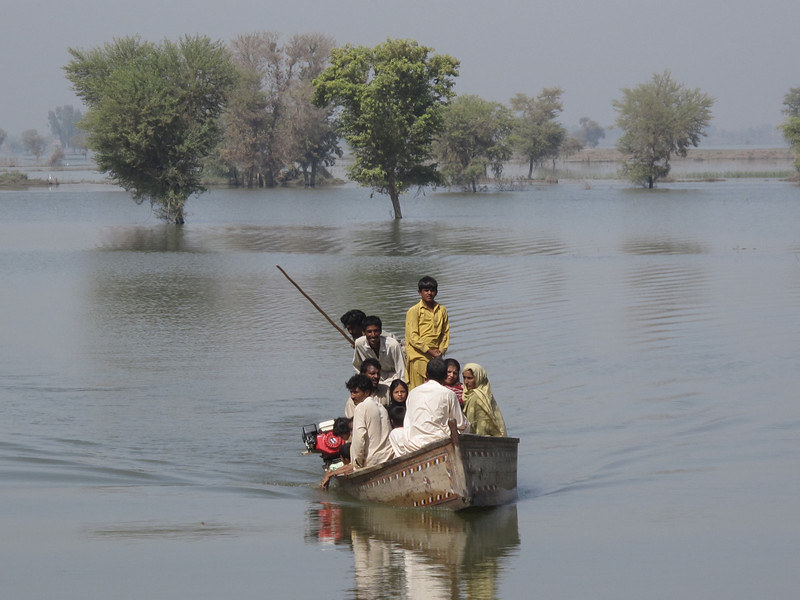Devastating Pakistan floods affect millions
Since June, Pakistan has been in a state of crisis with much of the country being underwater. This is due to climate change and global warming, melting glaciers up north and causing intense monsoon rains.
According to Pakistan’s National Disaster Management Authority, 33 million people have been affected by extreme flooding. This includes at least 1,110 deaths, and over a million damaged homes.
The scale of this disaster has escalated for several reasons. According to BBC’s Georgina Rannard,
Pakistan is affected by two major weather systems, one causing extremely high temperatures and the other causing monsoon rains. The heat waves of this last June and May are likely what caused the flooding. The temperature rose to 40 degrees celsius for long periods of time, even making it up to 51 degrees Celsius in the city of Jacobabad.
SENIOR Hajra Munir has family members living in Pakistan who have seen the firsthand impact of the floods. Her grandmother and uncle have seen families lose their homes, students unable to attend school and important buildings that have been destroyed.
“[The floods] have affected my family here a lot. We’ve been talking about it a lot and how it’s been hurtful to see almost a third of Pakistan flooded and how kids don’t have homes and don’t have school,” Munir said.
Malik Amin Aslam, Pakistan’s former minister for climate change said, “These were not normal heat waves — they were the worst in the world. We had the hottest place on Earth in Pakistan.”
Warmer air holds more moisture, resulting in higher levels of monsoon rains.
“The northern region is sometimes referred to as part of the ‘third pole’ – it contains more glacial ice than anywhere in the world outside of the polar regions.” Georgina Rannard from the BBC states.
Due to climate change, glaciers in the northern polar region are melting at a rapid rate and are creating more than 3,000 lakes. 33 of these lakes are at risk of suddenly bursting, putting seven million people at risk of sudden flooding.
“I think it is important that Walnut students and others are aware [of the floods] because they can see how blessed we are to have this amazing school and have our homes because there are kids in Pakistan who are running, trying to find a place [to stay],” Munir said. “It’s important that we are aware of what’s going on in the world, not just in Pakistan, but there are so many other places where climate change is wrongfully affecting families.”
Pakistan contributes to less than 1% of all global greenhouse gas emissions, yet is in a state of emergency due to climate change and global warming,” Dr. Saeed, a climate impact scientist, said to BBC, “The victims are living in mud homes with hardly any resources – they have contributed virtually nothing to climate change.”
Less fortunate countries such as Pakistan, which are contributing the least amount of carbon emissions, are being affected by climate change the most. Poorer countries have always had a difficult time with extreme rainfall due to fewer flood defenses and low-quality infrastructure, however, many believe that addressing natural disasters should be a multi-country effort.
“In general, flooding that occurs in one region is usually not limited to that one region because you probably look at it like multi-government involvement, because you’re talking about different watersheds,” AP Human Geography teacher, Justin DeMoss said. “If you’re talking about additional rainfall happening outside of that particular region, we’re talking about changing the hydrologic cycle, moving dams and things like that, which would involve multiple countries.”
Dr. Saeed hopes that this catastrophe will be a “wake-up call” to the world’s powers to enact their promises of tackling climate change.
“Students should be paying attention to what’s going on outside of just their community, trying to have more of a global focus,” DeMoss said.
Your donation will support the student journalists of Walnut Hills High School. Your contribution will allow us to purchase equipment, cover our annual website hosting, printing costs and offset competition and conferences fees for students.













